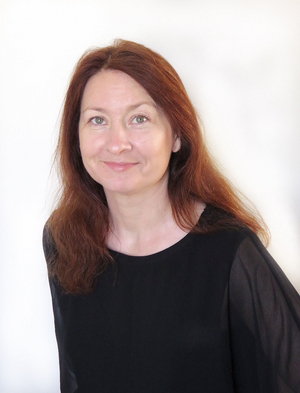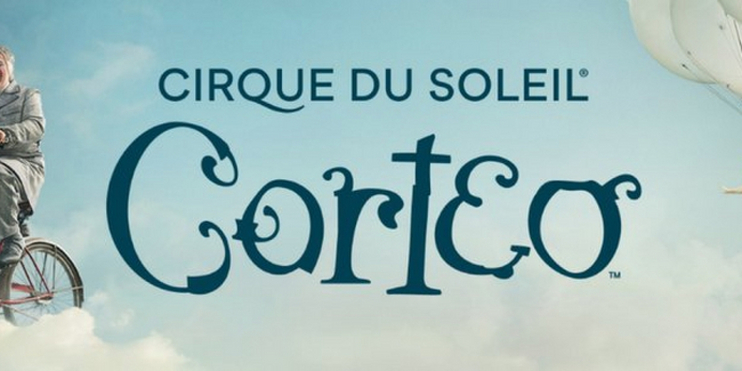Interview: Rachel Lancaster, Artistic Director of CIRQUE DU SOLEIL'S KURIOS, on Pushing Ideas to Their Limit and Surviving the Pandemic
The former dancer speaks about keeping her team motivated and the power of self-belief

Since 1996, it's become something of an annual tradition to see Cirque du Soleil pop up at the Royal Albert Hall. This year, making its European bow, the company returns to the Royal Albert Hall this month with Kurios: Cabinet of Curiosities, a steampunk-inspired story.
It feels almost obligatory when talking of Cirque to roll out its boggling statistics - over 4,000 artists from more than 50 countries have entertained over 180 million spectators in more than 400 cities and over sixty countries on six continents - and ponder what its billionaire founder and celebrity poker player Guy Laliberté (a man who tried and failed to write off his £42m trip to the International Space Station as a business expense) is up to now that he has sold his stake in the company.
What often goes under the radar when discussing Cirque is the personal stories behind the shows and the insights into what it takes as at a human level for these immense productions to travel the globe. Cirque was particularly badly hit by the Covid shutdowns: it was forced to shutter all their shows and lay off 95% of its staff in March 2020.
Originally a London-based dancer, Rachel Lancaster joined Cirque in 2011 and, after stints with Corteo and Amaluna, is currently the artistic director of Kurios. BroadwayWorld spoke to her about the power of self-belief, seeking out what is possible and how she survived the pandemic.
What is Kurios about?
Kurios is set in the turn of the twentieth century and it's all about a scientist's journey. It's based around lots of steampunk ideas and there are lots of references to the industrial revolution all the way through the show. The concept and look of the whole show is very important and you'll see plenty of moments where you'll see familiar looking objects being used in an unexpected way. That's something that was the foundation for the show in the beginning.
The story is very much told through the eyes of the chercheur or Seeker who truly believes that anything is possible, maybe not in the present moment but maybe in the future or somewhere else. His journey is about making connections and discoveries within a parallel universe. [Kurios' writer and director] Michel Laprise declared this concept his motif and tagline to everyone who worked on the creation process for this show, whether it was looking at the costumes, the set, the music or designing the acrobatic skeleton.

Photo Credit: Jacob Nguyen
What makes Kurios special?
We have a number of unique acts for Kurios which is not unusual for Cirque. This is a company which can spend years evolving an act for one show only to use it in another. One of the signature acts for Kurios is the Acronet which looks like the world's biggest trampoline. If you were to jump on this on your own, you would only get about a couple of metres clearance at most but, with our team of people on it creating tension, we can get flights upward of thirty feet.
Through the creation process, they were struggling on how to get this apparatus to work in they envisioned it. They kept pushing and they kept pushing and eventually they found a way to get tension and to get the acrobats higher and higher. It almost got canned or pushed to a different show and is a good example of how Cirque persists with their ideas.
What do you find most interesting about Kurios?
There are, in some parts, some very complex technical setups but other parts are incredibly simple. We have this giant structure that opens almost like a book and it's huge - about four metres high, three metres wide - and it's pinned literally with a pin into the centre of the stage. There's a point in the middle of an act where it revolves and it is just a human on a bicycle that is making this whole thing turn.
Taking a bit of a sidestep, what does an Artistic Director for a Cirque production do?
It's essentially a very fancy title for a rehearsal director. Obviously, because we're on tour for two weeks per year, my main goal is to make sure that the show on stage every day is as close to what it was at creation. My job is to keep everyone motivated and ask "how do we tell the story better?" As it grows and people get better at what they do, we're constantly evolving the acrobatic content and the narrative, looking at adjustments to the costumes and the set. I inherit the creator's vision and keep driving it.
Let's take it all the way back to the beginning of your Cirque journey. How did you go from being a dancer to becoming Artistic Director for the biggest circus organisation in the world?
 While working with Matthew Bourne's New Adventures company, I was a dance captain as well as the rehearsal director on tour while still performing. Through friends working at Cirque, I applied for a role there. They invited me to see Corteo in Madrid and interviewed me while I was in the midst of working on a huge show for New Adventures. I ended up getting the job at Cirque as the assistant artistic director for the big top version of Corteo, something which proved to be a good stepping stone into my current position. For me, the stuff on stage is the easy bit to manage but my initial hybrid role helped me learn more of the structure of Cirque and about processes like casting and contracts which I hadn't had worked on before.
While working with Matthew Bourne's New Adventures company, I was a dance captain as well as the rehearsal director on tour while still performing. Through friends working at Cirque, I applied for a role there. They invited me to see Corteo in Madrid and interviewed me while I was in the midst of working on a huge show for New Adventures. I ended up getting the job at Cirque as the assistant artistic director for the big top version of Corteo, something which proved to be a good stepping stone into my current position. For me, the stuff on stage is the easy bit to manage but my initial hybrid role helped me learn more of the structure of Cirque and about processes like casting and contracts which I hadn't had worked on before.
We have to talk about Covid. It was a particular tough time for Cirque which laid off 95% of its staff on 19 March 2020, the day before theatres closed here in London. How was it for you?
We were working in Australia and Asia at that point so we were already quite conscious of what had been happening. Everyone had just had their two-week break. I had been in Japan during the break and the company manager had called to ask if I could come back early. Two of our artists had to stay in Mongolia as they had already closed the border. In some ways, it wasn't a surprise that we had to close. I helped the tour management team to make sure everyone got home ok and they were all home within a week. We partially packed everything and left the big top up in Melbourne expecting to be back within three months.
But, sadly, you weren't. So what did you get up to in 2020?
In 2020, I got to live in my own apartment in London for the longest that I've lived there in 15 years! I taught Pilates and dance on Zoom, had Zoom quiz nights with industry friends and was in performance mode in my living room for a while. We had weekly arts projects for a while which became very competitive and, during that beautiful summer, the garden got a lot of attention.
It was very bittersweet for me. On the one hand, it was amazing to have that time with my partner, my friends, my friends' children and my family but at the same time. On the other, it wasn't easy not being at work and travelling when that's what I had always done. It was hard for everyone in many different ways. I would say for people who work in entertainment are used to being resourceful and having a plan B. That's what you learn before you even graduate.
And 2021? It was a very up and down here in the UK - how was it for you?
We got the call that we were relaunching probably July 2021 and I started planning with the seniors all the way through that summer but we only started rehearsals the following year in January. We had three months in Montreal and a month in Toronto to do all the acrobatic training, a month of staging ready to open in Toronto in April 2022. And even when we were starting in January, Quebec was in full lockdown and covered in snow. It was impossible to be socially distant so we formed a bubble. We lived at the residence and the studio across the road, we couldn't socialise as there was nowhere to go. It was very much a white snowy bubble.
Finally, for fans of Cirque who have seen many of their other shows, what would you say sets Kurios apart from them?
I would say that there's a level of detail in this show that is really very unique. We have more props than any other show, we really create a world that hits a big audience in a range of ways. Thanks to the Acronet, the acrobats spend more time in the air than in any other show. Obviously what we do is high-level acrobatics and non-verbal performance but its very theatrical, there's some really beautiful storytelling within it with many of our key characters also being acrobats.
Kurios: Cabinet of Curiosities is at the Royal Albert Hall from 13 January - 5 March.
Comments

Videos
